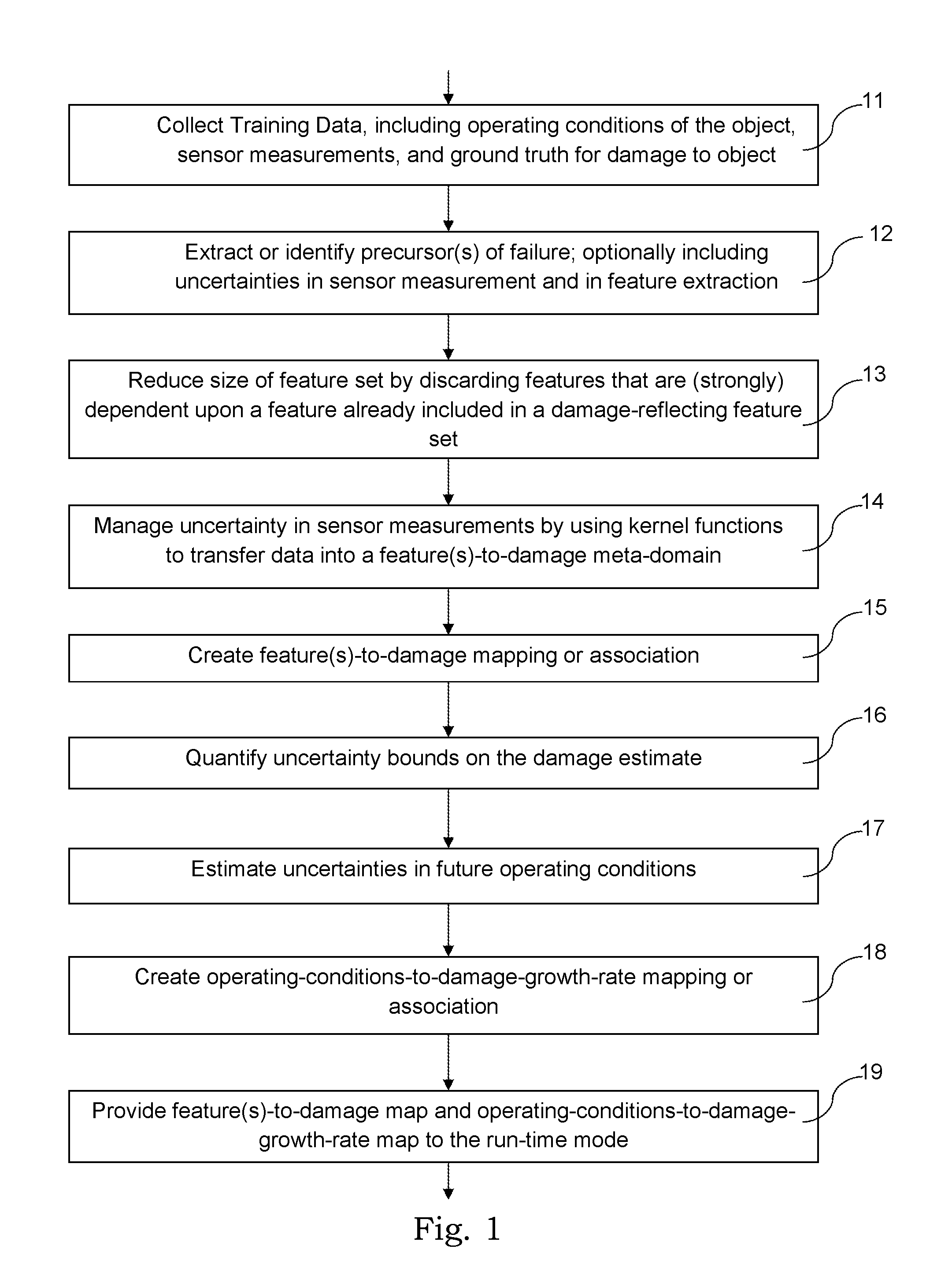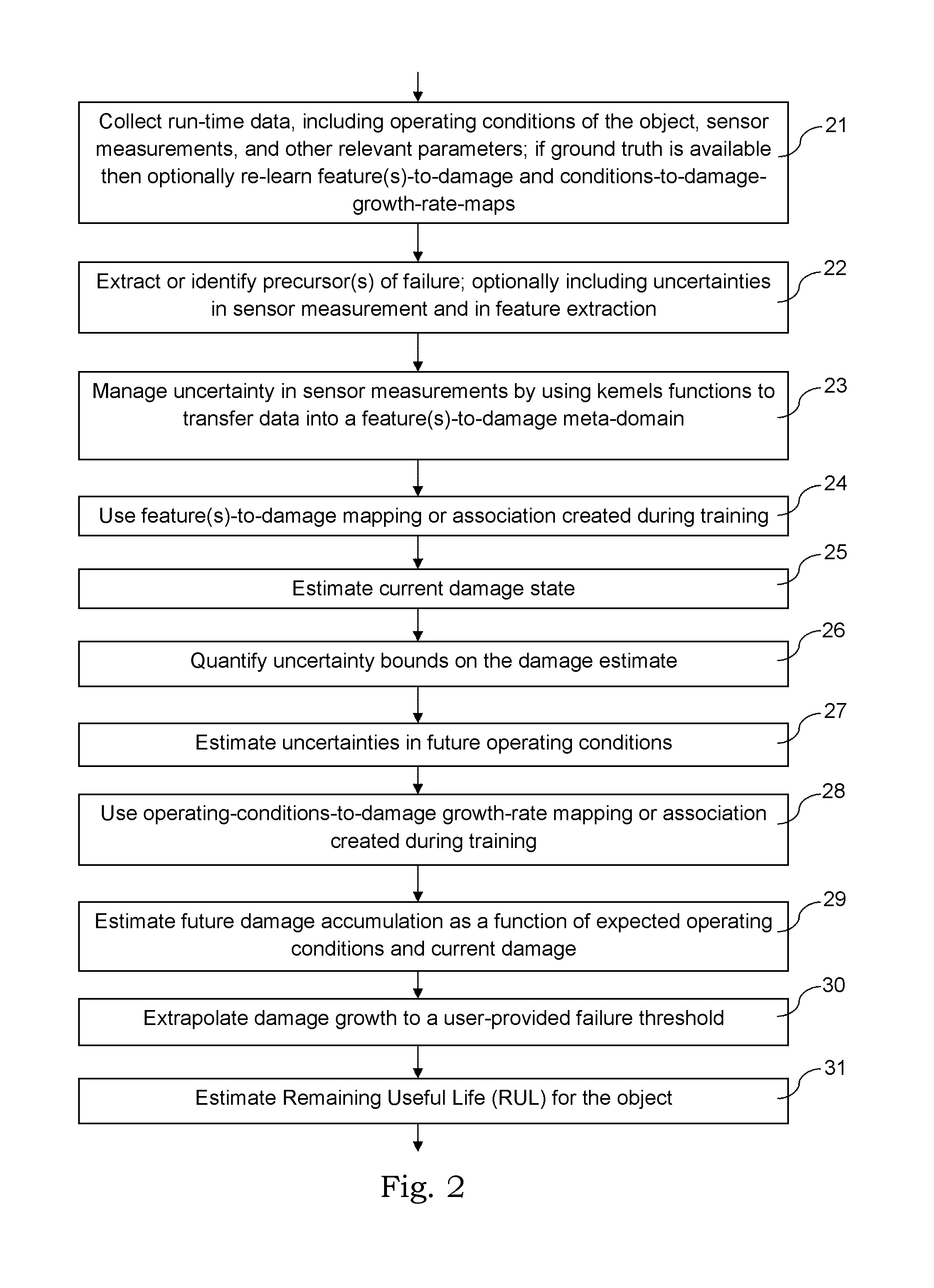Decomposition technique for remaining useful life prediction
a technology of decomposition and prediction, applied in the direction of instruments, testing/monitoring control systems, nuclear elements, etc., can solve the problems of delayed operations, adversely affecting the safety of operations, and emergency procedures implemented, and achieve the effect of reducing the information about the damage progression in the system
- Summary
- Abstract
- Description
- Claims
- Application Information
AI Technical Summary
Benefits of technology
Problems solved by technology
Method used
Image
Examples
Embodiment Construction
[0014]The decomposition technique for remaining useful life (“RUL”) prediction has two modes of operation, an off-line training mode and a run-time usage mode. The starting point of the training mode procedure, illustrated in FIG. 1, is a data collection module that collects the sensor measurements, the operational conditions and the ground truth, which is indicative of the extent of damage to the object or system of interest. Sensor measurements are typically of the form of temperature, pressure, vibration, voltage, current etc. Operational conditions include, but are not limited to, ambient temperature, humidity, load force or torque, rotational speed, impedance load, percentage-of-use, etc. The definition of “ground truth” varies according to the application domain. For example, the ground truth for bearing wear could be spall length; for a gearbox it could be crack size; or it could be more indirectly derived values like the internal impedance of a battery obtained from electroc...
PUM
 Login to View More
Login to View More Abstract
Description
Claims
Application Information
 Login to View More
Login to View More - R&D
- Intellectual Property
- Life Sciences
- Materials
- Tech Scout
- Unparalleled Data Quality
- Higher Quality Content
- 60% Fewer Hallucinations
Browse by: Latest US Patents, China's latest patents, Technical Efficacy Thesaurus, Application Domain, Technology Topic, Popular Technical Reports.
© 2025 PatSnap. All rights reserved.Legal|Privacy policy|Modern Slavery Act Transparency Statement|Sitemap|About US| Contact US: help@patsnap.com



